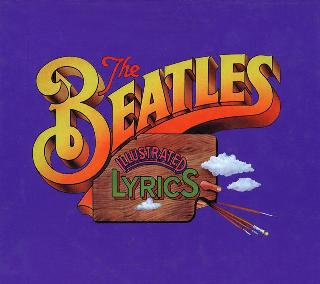Index
Home
Vorige
Blackbird
Composer(s) : Lennon and McCartney
Year : 1967
Chords/Tabs: Blackbird
Notes on "Blackbird" (B2)
KEY G Major
METER 4/4
FORM Intro -> Verse -> Interlude -> Verse -> Refrain ->
Verse (instrumental) -> Refrain -> Interlude ->
Verse -> Outro (w/complete ending)
GENERAL POINTS OF INTEREST
Style and Form
- This folk song, spiked by just a little shot of blues, is a welcome
contrast (or perhaps, antidote) to what might be called the various
excesses scattered all over the rest of the double White album;
no pejorative connotations intended.
- The song is a marvel of deceptive simplicity: the raw materials used
are both simple in nature and small in number. Yet, they are recombined
with a quiet, clever economy that makes them sound quite rich.
- The song also features a surprisingly large amount of free-verse uneven
phrasing.
Melody and Harmony
- The home key of G is clearly sustained throughout, though the Major
mode of the verse sections is supplanted in the refrains by a bluesy
Dorian mode; i.e. the one with minor 3rd and 7th degrees (the white
note scale on ["this is"] D.")
- The lyric's encouraging message to proactively rise above one's
most innate challenges is nicely abetted by the way in which the
high points of the tune are deployed: a high 'D' as early as the
3rd measure of the verse, and the REALLY high 'G' (the climax of
the song) smack in the middle of the refrain, right where the
V-of-V chord appears.
Arrangement
- There's just acoustic guitar and a metronome! For those of you who,
like myself, first encountered this song on vinyl, I am curious to know
if anyone else ever entertained an initial suspicion that the ticking
was caused by an extraordinarily well-synchronized scratch on the
platter? :-)
- The lead vocal is intimately done up single tracked for the verse,
and doubled for the refrains.
- The guitar part is dominated by a progression of parallel 10ths,
the "melodic" thrust of which drives the harmony in broad brush;
i.e. not every measure contains a chord of Roman numeral/grammatical
significance. As a matter of training your ear, I recommend you try
listening to this track while actively blocking out the vocal, and
concentrating on those 10ths in the guitar part; try it, you'll like
it.
- A rather obvious compositional lesson, but one worth pointing out
in any event: if you're going to add a birds-chirping effect to a song
in which the same creatures figure in the lyrics, then don't use them
for the whole piece, and if you use them for only "half," then save them
for the *latter* half. That said, I don't believe this song would lack
anything if the birds had been omitted.
SECTION-BY-SECTION WALKTHROUGH
Intro
- The intro is identical to the accompaniment of the verse
section's first phrase; see 'A' phrase below.
Verse
- The placid mood of the verse is belied by its flexibly uneven
phrasing; first phrase being 2 beats longer than three measures,
second phrase of 4 measures, third phrase of 3 measures, and finally
another 4 measure phrase:
**'A' Phrase *1/2 measure*
|B C |D |b - |- |
|G A |B |g - |- |
G: I
**'B' Phrases
|E G |F# A |G - |- |
|C C# |D D# |E - |Eb - |
IV vi
|F# G |E - |Eb |
|D Db |C - |-
IV
|D - |C# - |C natural - |B - |
|B - |A - | - |G - |
I6/3 V-of-V V7 I
- I'm dishing out the Roman numerals sparsely here. Yes, if you
want to get fussy about it you can droom-up such numerals for every
change in this section, but I reiterate my earlier comment that
your ear is largely carried along by the melodic motion here, rather
than by harmonic (i.e. root) "progression." Scale-wise bassline
movement retains the special power to make this work, especially when
it is made to move chromatically by half-step, as happens here part
of the time.
- The first verse, only, is followed by the following instrumental
connecting section, which is a kind of four-measure condensation
of the previous six measures:
**'C' Phrase
|E D |C# - |C natural |B |
|C B |A - |D |G |
IV I6/3 V-of-V V7 I
- The second verse proceeds directly into the refrain without the
'C' phrase.
Refrain
- The refrain also features uneven phrases (4 + 5), IN SPITE of its
otherwise parallel, AA' sub-structure:
|A G |F E |D - |E - |
|F E |D C |Bb - |C - |
IV IV
|A G |F E |D - |C# - |C natural |
|F E |D C |Bb - |A - |D |
IV V-of-V V
- Again, I'm using a light hand with the chord labels. For example,
I steer clear of labeling the chords on the downbeats of the
first two measures of this section as having harmonic "roots" of
their own; I hear them as appogiaturas or passing tones with
respect to the C Major chords in the second half of those two
measures.
- In the big picture, think of the entire first phrase as a prolongation
of the IV chord, with the ultimate destination reached by the second
phrase (A Major, V-of-V) being cautiously stepped back from at the
last minute in the first phrase. Superb "word painting" in light
of the song's message.
- The detailed form of the song from here to the end is a bit more
complicated than typical. The first refrain elides with an
instrumental exposition of the complete verse. The latter
leads back into a repeat of the refrain, which is followed this
time with:
An instrumental extension of Phrase 'A' above, which outro-like,
leads to a brief halt, but wait; there's still more!
An intro-like section that is constructed out of phrases 'A' and
'C' elided together.
- At this point, the birds enter, and the song moves into its final
verse.
Outro
- The outro grows out of the final verse with yet another example
of the three-times-you're-out gambit; something, again, that
rhetorically fits here in terms of the underlying message.
- And one last bird-related lesson: let the sound effect persist
a rough second or two AFTER the music stops, because neither
alternative of shutting off the birds either before the music
or EXACTLY at the same time as the music works as well.
SOME FINAL THOUGHTS
- We've got another case this time where the final version demonstrates
some masterful reworking of the Esher demo:
- The demo gives away the entire verse whereas, in general, you'd
be better off holding a couple of the cards up your sleeve, or
at least, if you're going to give the whole verse away in the
Intro, then at least do not double up on the sung verses; e.g.
compare with "Martha My Dear."
- In spite of the long intro, the demo lacks most of the instrumental
insterludes that appears in the final version; no 'C' phrase intervenes
between the first two verses, the instrumental third verse contains
the final phrase sung, and there outro/re-intro after the second
refrain is eliminated.
- The demo ends with a "four-times-you're-out" gimmick which not
only seems a too-long violation of the rhetorical Rule of Three,
but also undermines the flow by NOT repeating the sung tag line
in the second repeat.
Regards,
Alan (awp@world.std.com)
---
"Well, me mother said the trip u'd do him good." 121497#139
---
Copyright (c) 1997 by Alan W. Pollack
All Rights Reserved
This article may be reproduced, retransmitted, redistributed and
otherwise propagated at will, provided that this notice remains
intact and in place.
Ook op The Beatles [White Album]:
(c) 2024 Serge Girard


 (c) Alan Aldrigde, The Beatles Illustrated Lyrics
(c) Alan Aldrigde, The Beatles Illustrated Lyrics